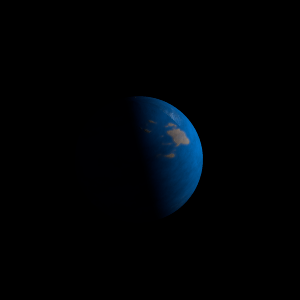|
|
Space Astro
|
Info for exoplanet "Satsu Funyo"
| Scientific (actual) data |
|---|
| Name | Kepler-1851 b |
| Planet status | Confirmed |
| Radius | 0.348 |
| Orbital period | 12.0229 |
| Semi major axis | 0.1016 |
| Orbit eccentricity | 0 |
| Inclination | 87.95 |
| Discovered | 2017 |
| Updated | 2024-06-20 |
| Tzero tr | 2454970 |
| Impact parameter | 0.965 |
| Temperature (kelvin) | 776 |
| Publication | Announced on a website |
| Detection type | Primary Transit |
| Radius measurement type | Primary Transit |
| Alternate names | KOI-2528 b, KOI-2528.01 |
| Star name | Kepler-1851 |
| Right ascension | 285.67° |
| Declination | 45.64° |
| Mag v | 15.699 |
| Mag i | 15.441 |
| Mag j | 14.524 |
| Mag h | 14.141 |
| Mag k | 13.962 |
| Star distance | 1589.81 |
| Star metallicity | -0.28 |
| Star mass | 1 |
| Star radius | 1.126 |
| Star sp type | G3V |
| Star age | 0.3 |
| Star temperature | 5629 |
| Star alternate names | KIC 9205907, KOI-2528 |
| Wikipedia article | Kepler-1851 b |
Back
| |
| Fictional info (?) |
|---|
| Suggested name | Satsu Funyo |
| Planet type | Warm planet |
| As seen relative to the fixed stars, it rotates on its axis exactly three times for every four revolutions it makes around Kepler-1851.
It is radically different from Earth in other respects.
The two polar ice caps appear to be made largely of dust. The volume of water ice in the south polar ice cap, if melted, would be sufficient to cover the entire planetary surface to a depth of 12 meters.
The largest moon is inhabitated by large and primitive oceanic creatures called the "Ryocha". They feed hidden in craters while consuming another species called Terangyu-byo. They are not related to the Papake and have 3 arms and vary in length from 60 to 80 mm. Ryocha can reproduce at temperatures from 100 to 180°C and ultra violet light. |
| Estimated population | 13000 |
| Atmosphere | Methane | 72% |
| Water | 18% |
| Carbon dioxide | 10% |
| Oxygen | 0.00075% |
| Atmospheric pressure | 15 bar |
 |
| Moon | Tonuhya'zechaka | Very small almost round ice moon |
| Google search for Satsu funyo |
|
Website by Joachim Michaelis
|
|
|
|